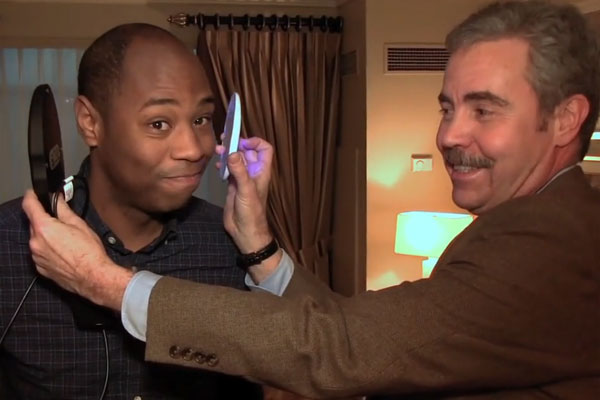Tour WiTricity's Room of Tomorrow: Wireless Charging That's Flexible
You probably haven't heard of WiTricity, but if the company has its way, you will. That's because WiTricity wants to bring its flavor of wireless charging to your car, your home, and everywhere else. Using a form of power transfer called magnetic resonance, WiTricity can power gadgets on any surface, and do so with a little more convenience than some existing methods.
Powermat is easily the most recognizable company in the sans-wire charging game. In order for its products to charge properly, they must be in contact together, and not just bumping their edges but in full flush contact.
WiTricity's charging solution requires contact but not quite so much. A smartphone will charge as long its right-side is connected to device with a special copper-coil power transmitter embedded inside. The coil itself is connected to a battery or other power source.
When the power source is activated, the copper coil absorbs electricity, then resonates it through its own magnetic field. A nearby sensor coil absorbs the electricity from the air or between the touching surfaces.
During a demo at CES 2013, WiTricity CEO Eric Giler showed off several ways the company's technology can be applied to consumer tech products and the home. One example included an Apple laptop with a resonant coils inside that could be used to charge a smartphone just by setting the phone near the notebook (7:00 mark in the video above). Other standouts include a 100W television set powered by a coil located beneath the TV stand (8:22) and a wooden desk wired to power a lamp, wireless keyboard, and any other WiTricity-enabled hardware nearby (10:05) . Giler also showed us how copper coil wired into carpeting can be used to power home appliances, smart phones, even rechargeable batteries (10:30).
While we watched as WiTricity powered low-energy LED lights located about a foot away from the source device, we noticed that smartphones, laptops, lamps, and a Bluetooth headset required at least some physical contact with a material connected to the transmitter.
That experience is on par with another wireless charging solution demo'ed here at CES. The Alliance for Wireless Power, an organization of companies that includes Powermat, demo’ed a magnetic resonance technology that restored power to gadgets in close range. Both initiatives appear to require at least some contact between the source and the receiving device for maximum efficiency.
Sign up to receive The Snapshot, a free special dispatch from Laptop Mag, in your inbox.
If you're worried about the health implications of yet another wireless signal coursing through your body, Giler says WiTricity is safer than using a smartphone. To demonstrate the point, he placed this writer's head between a power transmitter and LED light absorbing electricity. So far, so good.
You won’t find WiTricity on consumer products for a while, but the company has announced a partnership with Alps Electric, an internal gadget-designer for OEMs and ODMs, meaning WiTricity is on its way to coming native inside gadgets. Partnerships with Audi, Mitsubishi, and Toyota (also a WiTricity investor) highlight the company’s plans to develop charging implementation for electric cars.
As exciting as electric cars charged wirelessly in your garage sounds, we can’t wait until our laptop can charge up our smartphone.
Kenneth was a Social Media Editor at Laptop Mag. Outside of his limitless knowledge of social media, Kenneth also wrote about a number of tech-related innovations, including laptop reviews (such as the Dell XPS or the Acer Aspire) and even hands-on pieces about printers. Outside of Laptop Mag, Kenneth also worked at our sister site Tom's Guide.

